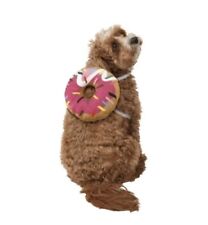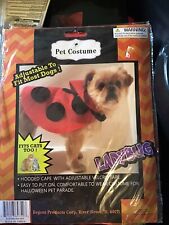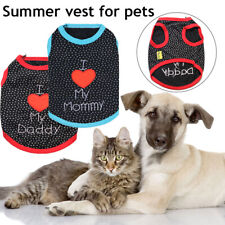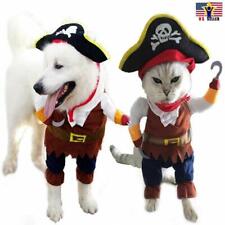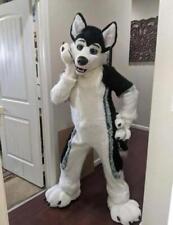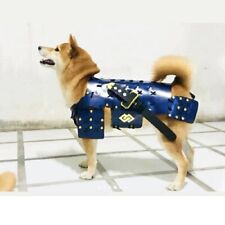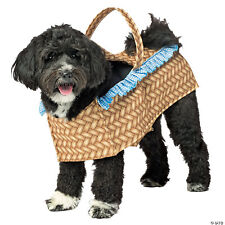Guide to Cat Coat Colors and Patterns

These are plain English descriptions and not affiliated to any breed or registry. It is not an authoritative list. Not all colors are recognized by all registries. Some are experimental, some look so similar that they can only be worked out if you know the colors and genetics of the cat’s ancestors (this only matters if you are showing or breeding cats). Some color/pattern combinations appear in several places in this article because they are related to other combinations. This article won’t mention genetics except in very simple form in one or two places – it is just a plain English guide for cat-lovers!
A word of warning: different colors have different names in different breeds/countries and the same color-name might be used in different breeds/countries for different colors! The inclusion of a description of a color or pattern is no comment on its desirability, just the fact that it exists!
Likewise, omissions are because of lack of information. I’ve tried to include synonyms and only refer to breeds if necessary to clarify name clashes/conflicts. Some of the terms are old-fashioned or are restricted to certain breeds only. At the end of this file is a list of colors/patterns which haven’t yet been documented in cats but which might be possible if the right mutation occurs
Here is a brief, plain-English glossary of the major cat coat colors.
Solid/Self
The cat is a single color; the individual hairs are one color with no agouti banding on the hairs.
Agouti
Refers to the several bands of color on a single hair (e.g. on Abyssinian cats or in the pale areas of a tabby cat). Agouti is also used to mean a ticked tabby cat such as the Abyssinian.
Maltesing
Color dilution e.g. the dilute of black is blue (gray)
Sepia (1)
Apparently self-colored cat bearing gene for Colorpoint e.g. Burmese series; sometimes you can see that the legs, head and tail are darker than the body.
Sepia (2)
The ‘old ivory’ color of Singapura cat
Mink
Intermediate between sepia and pointed; the points (face, legs, tail) are a darker version of main body color.
Pointed
The Siamese pattern (also called Himalayan pattern) with a pale body and darker legs, tail and ears.
Bi-Color (Magpie)
Any color & white; for show cats the color should be evenly distributed.
Tri-Color
Calico/Tortoiseshell (tortie) & White Color Range
Parti-Color
Usually defined as calico, with color patches on up to one-third of the body
Calico
Tortoiseshell (tortie) & white
Torbico
Torbie (tabby-tortie) & white
Van/Van Bicolor
White with color on the tail between the ears.
Harlequin
Van markings (any color) + small patches (as few as possible) of the same color on the body and legs.
Pied
Unevenly splashed with color.
Mitted
White bootees on all four feet, the back bootees usually go up to the hocks, the front bootees are on the toes or paws only
Brindled
Tortie with intermingled colors
Self (Solid) Colors
Colors have different names in different countries and in different breeds. Different breeds/countries may use the same name for different colors! This section describes colors in as non-specific a way as possible.
- Albino: lack of pigmentation i.e. white with blue eyes; the most extreme form of albino is a cat with pink eyes.
- Apricot: pink-brown of Foreigns
- Beige: of Foreigns
- Black: jet black, called Ebony in Foreigns
- Blue: blue-gray; the dilute of black
- Brown: called Sable/Seal in Burmese/Siamese
- Caramel: of Foreigns, cafe-au-lait color (biscuit color)
- Champagne: Burmese version of Chocolate
- Chestnut: medium-dark brown (Oriental version of chocolate)
- Chocolate: medium-dark brown (Siamese version of chestnut)
- Cinnamon (Light Brown): milk-chocolate brown
- Cream : buff (dilute of red)
- Ebony: of Foreigns (called Black in other breeds)
- Fawn: "hotter" version of cream
- Frost: alternate term for Lilac
- Indigo: (new development, no description available)
- Lavender: described as warm blue-brown, or pinkish frosty gray
- Lilac: alternative name for Lavender (dilute of Chocolate)
- Light Brown: alternative name for cinnamon
- Light Chocolate: milk-chocolate (of Burmillas)
- Peach: pink-brown of Russian Shorthair
- Platinum: Burmese version of Lilac
- Red: faint tabby markings (ginger)
- Seal: very dark brown; Foreign/Siamese version of black
- White: blue/orange/odd eyed varieties, also green-eyed whites.
Red, Fawn and Cream are not true self colors as there will always be faint tabby markings. Breeders work to dissipate the tabby markings and give impression of a non-patterned, self-colored cat.
Tabby Patterns
The usual tabby patterns are Classic (Blotched) Tabby, Mackeral (Striped) Tabby, Spotted Tabby, Ticked Tabby and Ticked/Agouti. In addition there are several modified versions of these patterns which are seen in certain breeds.
- Classic Tabby: The "blotched" tabby pattern with dark stripes down length of back and dark swirls (bull’s-eye) on sides of the body.
- Leopard: Modified version of Spotted Tabby. Round spots, colored to root of hair, ideally the spots are randomly placed, not vertically aligned. Found in hybrid cats (e.g. Bengal) where the spotted pattern differs from the spotted tabby.
- Mackerel Tabby: Vertical unbroken thin lines instead of swirls. Narrow spine lines and "necklaces". The stripes should not break up into spots.
- Marble: Modified version of classic tabby with swirled, clouding effect as the vertical orientation of the tabby pattern is affected by the horizontal oriented clouded pattern of the wild ancestor. Described as Ocelot-like. Found in Bengal breed (hybrid) and naturally occurring in the Marbled Australian Mist.
- Patched Tabbies/Tortie-tabby/Torbie: Tabby pattern overlaid on a tortie background e.g. deep red markings on red patched areas and black markings on brown patched areas.
- Rosette: A modified Tabby pattern. Clusters of spots; the center of each cluster is a deeper version of the background color. Found in hybrid breeds such as Bengal and Safari where it is confusingly called tricolor (not the same as calico!).
- Sokoke Tabby: A modified version of the Classic tabby pattern with agouti (background color) hairs appearing in the solid areas of the coat giving a slightly clouded/marbled effect. Found only in the naturally occurring Sokoke breed which originated in Kenya and is bred in Denmark.
- Spotted Tabby: The vertical bars of color are broken up into spots on the body. Stripes on leg, tail and face. Spots should be as round as possible, rather than elongated. It is often possible to see the vertical alignment of spots. Spine lines should be broken into spots.
- Ticked Tabby: Agouti pattern with ticked body, tabby barring on face, legs and tail, at least one necklace, darker dorsal region, pale lower parts. The pattern of the Wild Abyssinian and of poorly marked agouti patterned cats; intermediate between Agouti and Tabby.
- Ticked/Agouti: Agouti pattern all over, barring to be absent, as far as possible, from any part of the body. The ticked color range parallels the tabby color range.
Tabby Colors
Tabby means dark markings (stripes, swirls, spots) on a paler background. The stripe color is solid (goes right to the hair root), but the background color is agouti (each hair is banded with color). Different breeds may use different names for the same color. The tabby colors are:
- Blue Tabby: cream/ivory-blue base, slate blue markings
- Brown (Black, Ebony) Tabby: coppery-brown base, black markings
- Chocolate (Chestnut) Tabby: cream base, milk-chocolate brown markings
- Cameo Tabby: cream base, pale red markings (aka Red-Silver Tabby)
- Caramel Tabby: cream base, biscuit-color markings
- Chestnut Tabby: ivory base, medium-dark brown markings
- Chocolate Tabby: ivory base, medium-dark brown markings (= Chestnut Tabby)
- Cinnamon Tabby: pale brown base, cinnamon markings
- Cream Tabby: pale cream base, fawn/buff markings
- Fawn Tabby: pale pink-beige base, lilac markings
- Golden Tabby: tabby on golden undercoat (see chinchilla/shaded section) e.g. Chocolate Golden Tabby
- Lavender (Lilac) Tabby: milky cream base, frosty gray markings
- Red Tabby: pale red base, deep red markings
- Silver Tabby: silver base, black markings, aka Black Silver Tabby. Other Silver Tabbies occur with colored markings on a silvery background e.g.: Blue Silver, Red Silver (aka Cameo Tabby) etc. Other Golden Tabbies with markings on a golden background are possible, but the genetics are not fully understood.
As well as the various permutations of tabby/silver tabby/golden tabby, spotted/silver spotted/golden spotted there are some terms specific to the modified tabby markings and specific colourways of certain breeds.
- Bronze Spotted (Egyptian Mau): Chocolate Spotted Tabby
- Bronze:(California Spangled)
- Charcoal:(California Spangled)
- Cinnamon-Golden (Bronze) Spotted: (Ocicat) dark Cinnamon on Gold/Honey/Ivory
- Ebony Leopard: (American Lynx)
- Gold: (Australian Mist)
- Gold:(California Spangled)
- Golden Leopard: (American Lynx)
- Golden Spotted: (Ocicat) bright Cinnamon on Ivory
- King Spangled:(California Spangled) pattern like King Cheetah
- Leopard:(Bengal) black spots/rosettes on orange/tawny background (a form of Brown Tabby)
- Mink:(Bengal) black spots/rosettes on mahogany
- Peach: (Australian Mist) a misty pink base with darker markings
- Pewter Spotted: (Egyptian Mau)
- Sienna Spotted: (Ocicat) Beige/Ecru on Ivory background
- Smoke Spotted: (Egyptian Mau)
- Snow Leopard: (American Lynx)
- Snow Leopard:(California Spangled), the ‘dilution phase’.
- Snow:(Bengal) beige spots, black leg/tail stripes on pale Ivory (effect of Siamese/Burmese ancestry)
- Sorrel:(Bengal) chestnut-brown on orange/tawny
- Tawny Spotted: (Ocicat) Black/Seal on Buff/Ruddy
- Tawny: (American Lynx)
Ticked/Agouti Colors
Genetically, ticking is a tabby pattern, but visually it looks very different. Since each individual hair has several bands of color, the ticking affects the apparent color of the cat. Some colors are linked to the cat’s sex, but you only need to know that if you plan to show or breed. Ticked breeds are the Abyssinian, Somali, Suqutranese, Singapura, Alaskan Snow Cat although there are ticked versions of Orientals and it would be possible to produce ticked versions of other breeds. The background color of tabby cats is ticked, this is most obvious in brown/black tabbies.
- Blue
- Chocolate (Chestnut)
- Cream: true (sex-linked) cream
- Fawn (Beige): non sex-linked cream (dilute sorrel)
- Ivory: warm beige ticking on ivory (Singapura)
- Lavender (Lilac): dilute chocolate
- Red: true (sex-linked) red
- Ruddy (Usual, Brown, Tawny)
- Silver (Silver Usual/Silver Ruddy): silvery undercoat/base color
- Golden (Golden Usual/Golden Ruddy): golden undercoat/base color
- Sorrel (Cinnamon): non sex-linked red
Because agouti is a type of tabby, those colors can combine with the tortoiseshell markings to give Blue Tortoiseshell, Chocolate Tortoiseshell etc.
Ticked colors can occur on a silver undercoat e.g. Sorrel Silver, Blue Silver, Chocolate Silver etc. Silver Abyssinians and Silver Somalis are popular in Britain but rare in the US. The Alaskan Snow Cat has the Silver Abyssinian coat pattern. Ticked tortie can occur on a silver background to give Blue Silver Tortoiseshell, Chocolate Silver Tortoiseshell etc. The Silver Tortoiseshell Abyssinian/Somali is also called Ruddy Silver Tortie.
White: (Suqutranese only) pure white, translucent silver-white bands on hair visible in good light. White Somalis are bred, but not recognized. The effect is that of a sparkling white coat. The ticked colors and ticked tortie colors can be patched with white to give ticked bicolor, but this is presently only seen in non-pedigree cats.
Broken Colors: Tortoiseshells, Bicolors & Tricolors
Tortoiseshell is the mixing of two or more distinct colors; one of the colors is red or cream. The black/orange tortie will be familiar to most readers. In pedigree cats, well defined patches of each color are preferred. Cats with tabby markings on a tortie background are known as tabby-torties/patched tabbies/torties. Where the hairs are mixed together, the cat is referred to as brindled. Almost all tortie/tortie-and-white cats are female; males do occur sometimes but they are either infertile or they have a genetic condition called "mosaicism" and do not bred true.
- Tortoiseshell: Black/Orange (tabby markings visible on the orange patches)
- Dilute Tortoiseshell: Blue-Cream (tabby visible on cream patches)
- Brown Tortoiseshell: (Burmese version of black/orange Tortoiseshell)
- Chocolate (Chestnut) Tortoiseshell:Warm milk chocolate, red, and cream
- Cinnamon Tortoiseshell: Milk-chocolate brown and cream (Burmese)
- Lilac (Lavender) Tortoiseshell: Frosty lilac-gray and cream
The above can occur in combination with the tabby pattern e.g. Blue Tabby Tortie, Lilac Tabby Tortie, Silver Tabby Tortie etc. Solid colors can occur patched with white e.g. Black and White, Cream and White (faint tabby markings), Chocolate and White. Tabby patterns can occur patched with white e.g. Blue Tabby and White, Red Tabby and White, Silver Tabby and White. Ticked colors can occur patched with white.
Tortie patterns occur with white e.g. Tortoiseshell & White (Calico or Mi-Ke in Japanese Bobtail), Dilute Tortoiseshell & White (Dilute Calico/Blue-Cream and White), Chocolate (Chestnut) Tortie and White (Choc-Cream & White/Chestnut Calico), Lilac (Lavender) Tortie & White (Lilac-Cream & White/Lavender Calico) etc.
Tortie or Tortie-Tabby patterns can occur on silver backgrounds e.g. Blue Silver Tortoiseshell/Tortie Tabby/Tabby, Fawn Silver Tortoiseshell/Tortie Tabby/Tabby, Red Silver Tortoiseshell/Tortie Tabby/Tabby etc and possibly on golden backgrounds though the genetics of golden are not well understood at present.
Two others are Shell/Cameo/Silver/Golden Tabbies and Smoke Tortoiseshell/Shaded Tortoiseshell which are described in the section on chinchillas and tipped colors.
Mink Colors (Tonkinese)
Minks are pointed cats with much darker bodies and less (although still apparent) contrast between body color and point color. Mink is a halfway-house between solid color (Burmese) and Colorpoint (Siamese). In theory, Tonkinese occur in versions of all Burmese (solid) colors – the list below gives the Burmese equivalent name for some of the mink colors. Mink-color cats have blue, aqua or blue green eyes.
- Blue Mink: Ash blue (with warm fawn tones) body, medium/slate blue points.
- Champagne Mink: (Lilac) buff cream/light tan body, points golden tan to milk chocolate
- Honey Mink: (Chocolate/Chestnut)
- Natural Mink: (Black/Seal) Medium brown body, deep seal brown points.
- Platinum Mink: (Lavender/Lilac) Pale silver/pearly gray body (with light fawn tones), points pale dove gray to light taupe gray.
- Red Mink: Pale red body, darker red points with ghost tabby markings
- Cinnamon Mink
- Fawn Mink: A "hotter version" of cream.
- Cream Mink
Van/Van Bi-color/Harlequin/Seychelles Group
Van Pattern is also called Grade 8 – Grade 9 Piebald. It is the most extreme of the ‘Seychelles’ patterns, comprising patches on head at base of each ear; tail same color as patches, often with darker rings because red and cream are not true solid colors. Van Bi-Colors & Harlequins have additional markings on legs, one or two small patches on body. Beware: in Turkey, the term Turkish Van does not refer to a patterned cat!! The Seychellois is a Van-pattern cat of oriental type.
- Seychellois Patterns
- Seychellois Neuvieme: white, colored tail & head splashes
- Seychellois Huitieme: has additional leg splashes
- Seychellois Septieme: has leg & with body splashes
Colors of Van-Pattern Cats
- Auburn and White: original Turkish Van breed color – red-tabby markings
- Black and White: black markings
- Blue and White: ash gray markings
- Cream and White: dilute of auburn – cream-tabby markings
- Tortoiseshell and White: tortie/blue-cream markings
- Tabby and White: any color tabby markings
Other colors are being developed in Van pattern cats. In theory any solid, tabby or tortie color can occur in the Van pattern.
Mitted & Ragdoll Color Patterns
Van pattern is one extreme of white spotting and mitted is the other extreme with a colourpointed cat appearing to have white bootees. The ‘Mitted Pattern’ is found in the Snowshoe, Birman and Ragdoll. The mitted pattern can occur with any of the Colorpoint colors and patterns.
There are six Ragdoll patterns, only three of which have competition status:- Colorpoint, Bi-color and Mitted. The other three patterns are High Mitted (mitts extend up legs), Mid-High White (Bi-color with additional white in "saddle" area) and High White (Bi-color with even greater degree of white, "saddle" may be absent). The Piawaian Kucing Malaysia has a Ragdoll-type Seal Point Mitted pattern.
- Seal Point Bi-Color: Seal brown ears, tail, mask, "saddle"
- Seal Point Colorpoint: Siamese pattern
- Seal Point Mitted: Birman pattern, dark body, white face blaze, belly, boots & mitts
- Blue Point Bi-Color/Colorpoint/Mitted: as above but with blue (gray)
- Chocolate Point Bi-Color/Colorpoint/Mitted: as above but with chocolate
- Lilac Point Bi-Color/Colorpoint/Mitted: as above but with lilac
- Lynx Point Bi-Color/Colorpoint/Mitted: tabby-patterned points (various colors)
- Red (Flame) Point Bi-Color/Colorpoint/Mitted: red (red tabby, flame) points
Colorpoints (Siamese & Various Other Breeds)
Often called the Siamese pattern or Himalayan pattern (after Himalayan rabbits). As well as the colourpointed coat, they have blue eyes. Pointed cats are slow to develop their full body and point color and kittens/young cats have paler points or markings Older cats have darker body color. Temperature affects the point color – the coldest areas (the ‘points’ i.e. ears, legs, tail) are darker than the body and things like environment temperature, a fever or even bandaging a leg because of injury will affect the color.
Point Pattern Types
- Solid Point: points are of solid color e.g. seal (dark brown), blue (gray)
- Lynx/Tabby Point: points have tabby markings
- Tortie Point: points have tortoiseshell (multicolor) markings
- Abyssinian Point: points are ticked (i.e. agouti)
- Pastel Point: chinchilla/shaded silver tipped points (pale color on silvery background) (Tipped Siamese)
- Shadow/Smoke Points: shaded points, shadowy tabby markings (darker version of chinchilla)
Point Pattern Colors
- Seal Point: cream/pale fawn body, deep seal brown points
- Blue Point: bluish white body, slate blue points
- Caramel Point:cafe-au-lait color points
- Chocolate Point: ivory body, milk chocolate points
- Cinnamon Point: milk-chocolate color points
- Fawn (Light Lilac) Point
- Lavender Point: pinkish lilac points
- Lilac (Frost) Point: glacial white body, frosty pinkish gray points
- Red (Flame) Point: creamy white body, deep orange to red points
- Cream (Ivory) Point: creamy white body, buff-cream points.
Chinchilla (Shell), Tipped (Shorthair Tipped), Shaded & Smoke Color Group
Chinchilla (shell) is the lightest tipping; hair tip is colored and hair shaft is silver, giving a sparkling appearance. Shaded is next degree; color extends further along the hair shaft, darkest on the back to create a mantle of shading. Smoke is heaviest tipping; undercoat color is reduced to a small band near the hair root, the cat appears to be solid with pale ruff/frill until the coat is parted or the cat is in motion. In the golden series, the undercoat is gold rather than white. The terms "chinchilla" and "shell" are mostly used for longhairs (Persians), in shorthairs this is called tipped.
- Silver series: White undercoat with color tips.
- Golden series: Gold undercoat with color tips
- Shell: Chinchilla tipping
- Cameo: red (a term sometimes used in longhairs with red on a silver undercoat)
- Cream Cameo: cream (dilute of Red/Cameo)
- Silver Tabby: Colored markings on silvered/ivory ground color e.g. Red-Silver (Cameo) Tabby which is red on ivory.
- Tortie Chinchilla/Shell Tortie/Silver Tortie: Pale undercoat tipped in tortie combination of colors.
- Shaded Tortie/Tortoiseshell Shaded Silver: Pale undercoat tipped/shaded with tortie combination of colors (e.g. black red and cream). Tipping ranges from shell (chinchilla) to shaded.
- Smoke Tortoiseshell/Tortie Smoke: Pale undercoat smoked with tortie combination of colors. Undercoat only visible when cat is in motion.
- Silver Patched Tabby: Colored markings on silvered ground color interspersed with patches or red and/or cream (or other tortie combinations).
- Golden Patched Tabby: Colored markings on golden ground color interspersed with patches or red and/or cream (or other tortie combinations).
The first chinchillas/shaded silvers/smokes were longhairs which had black tipping or shading. Black on silver gives:
- Chinchilla: aka Silver/Silver Chinchilla/Tipped (called Burmilla in Asian group of cats)
- Shaded Silver: blue/green eyes, darker than Chinchilla
- Masked Silver: shaded silver with dark face/paws
- Pewter/Pewter Tipped: orange-eyed Shaded Silver
- Silver Tabby: black tabby markings on silver background
- Black Smoke: looks solid black until you part the fur which is pale near the roots
Future Color Possibilities
The following colors are found in other species, some have been observed in cats, but have not been standardized or developed further. Some may be introduced by Outcrossing to wild cats, as was rosetting/marbling in the Bengal.
- Yellow: true yellow (as seen in palomino horse), the ‘Palomino’ breed is said to be the color of a brown grocery bag.
- Banded (Belted): solid color with a solid band of white around middle of body (seen in Dutch Rabbits) – some Spanish street cats already exhibit this pattern but it has not been developed.
- Sheeted: solid color with a wide band of color (shoulder to haunches) (seen in some breeds of cattle)
- New Tortoiseshells: where the colors do not include red or cream e.g. black and blue patched.
- New Tricolors: in random-bred Japanese cats a Black-Grey-White tricolor has been found (fully fertile male) A mutant exhibiting
- Black-Yellow-White has occurred, the cat resembled a Jack Russell terrier, having a pointed face, long ears & bowed back legs.
- Quadricolors: i.e. patches in 4 distinct colors. I’ve seen only one example – a blue/cream/white tortie with a black/gray/white face; this may have been a form of mosaicism. The overall distribution of color was akin to a Bicolor Ragdoll (saddle, mask, white blaze). Eyes were blue.
- Mosaics: These look like torties, i.e. red with small black spots or patches but are genetically red/red tabby cats. This is because parts of the skin have a rogue black pigmentation which isn’t genetically inherited. Mosaicism was first noticed when a ‘fertile tortoiseshell’ male was examined and proved to be a mosaic male, not a tortoiseshell.
- New Colorpoints: dark points on a solid colored body (as seen in dun horses) or white/pale points on a dark body (seen in some pig breeds).
- Black and Tan: black upper body and outside leg, tan lower body and inside leg as seen in Doberman dogs (where it is a mutation of agouti). There is a sharp dividing line between the black and tan parts (a "waterline").
- Blue and Tan: dilute black & tan, dove-gray upper (agouti mutation). Other colors and tan might then be possible.
- New Tabbies: horizontal stripes, reversed tabby patterns with light markings on a darker base, true spotting, clouding & marbling. Some of these effects are seen in wild cat species.
- Zebra
- Pink/Red Eyed Dilutes: Seen in rodents, may already have occurred. A pink-eyed dilute has been reported, cat was tan with pink eyes. Kittens born to her were premature & stillborn. A pink-eyed white kitten was born in a cat shelter in the UK but died as a kitten.
- Satin: not actually a color, but a fur type which would have an effect on how the color appeared. It would add a sheen to the coat by reflect light in a different way (seen in mice).

